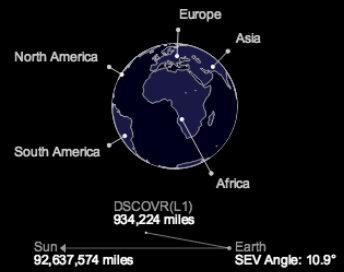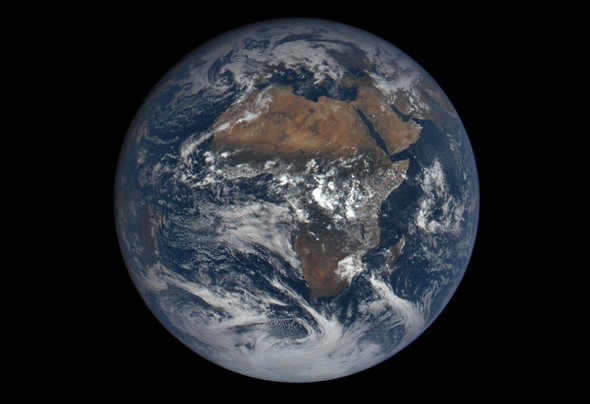Watch the World From a Million Miles Away*
Have you ever dreamt of flying away from the Earth, zooming through space, then turning around to see what our fragile blue world would look like from afar?
If you have, may I then introduce you to science? It’s been making dreams reality for a while now.
In this case, the conversion of fantasy to reality comes via NASA’s EPIC website, which will be updated daily with color, high-resolution deep-space views of Earth every day!
This is terribly cool. Here’s the deal.
The Deep Space Climate Observatory, or DSCOVR, was launched into space on a SpaceX Falcon 9 rocket in February 2015. It was placed into position about 1.5 million kilometers from Earth, in a direction toward the Sun. This spot, called the Lagrange 1 (or just L1) point is a special location: There, a balance exists between the gravity of Earth and Sun, as well as the outward centrifugal force of the space probe’s orbital motion.
More simply: If you put something there, it tends to stay there.
It’s not that simple but close enough for the moment. And that’s where DSCOVR sits, with its back to the Sun, and its Earth Polychromatic Imaging Camera (EPIC) pointed at our fair and fully sunlit planet. This camera is connected to a 30.5 cm (12”) telescope and can take images in 10 different colors, which are then downlinked (beamed back) to Earth about once per hour. These can be combined to form natural-color shots of the Earth, which are then uploaded to the website.

The spacecraft’s mission is to monitor our climate as well as various other physical processes that affect it. A side benefit is incredibly beautiful portraits of Earth, and indeed that was one of the reasons Vice President Al Gore wanted this satellite built in the first place. We communicate with words, but pictures smooth their passage considerably.

Diagram by NASA
The site is pretty simple; it displays an image of the Earth as well as a diagram showing what continents are visible. There’s also a diagram showing the relative distances and angles between the Sun, Earth, and DSCOVR. The spacecraft doesn’t sit exactly on the Earth-Sun line; because of a quirk of physics it can circle around that line in what’s called a halo orbit. This is actually preferable in many cases than being right on the line, because, from Earth, in that case the spacecraft would be seen directly in front of the Sun. Our star is noisy at radio wavelengths, making communication with the spacecraft difficult.
Anyway, I love this idea. Making these images public and easy to access means people can fool around with them, create animations, see what the Earth looked like at a given time. I imagine this will be useful in classrooms. What lessons can be created around these views?
And, given the main point of DSCOVR’s mission, what lessons will we all learn?
*Yes, I know I used imperial units in the title, but it’s more poetic. The metric system’s only flaw is its lack of flowing rhythm in the pronunciation of its units. Ironically, this would be its meter.


